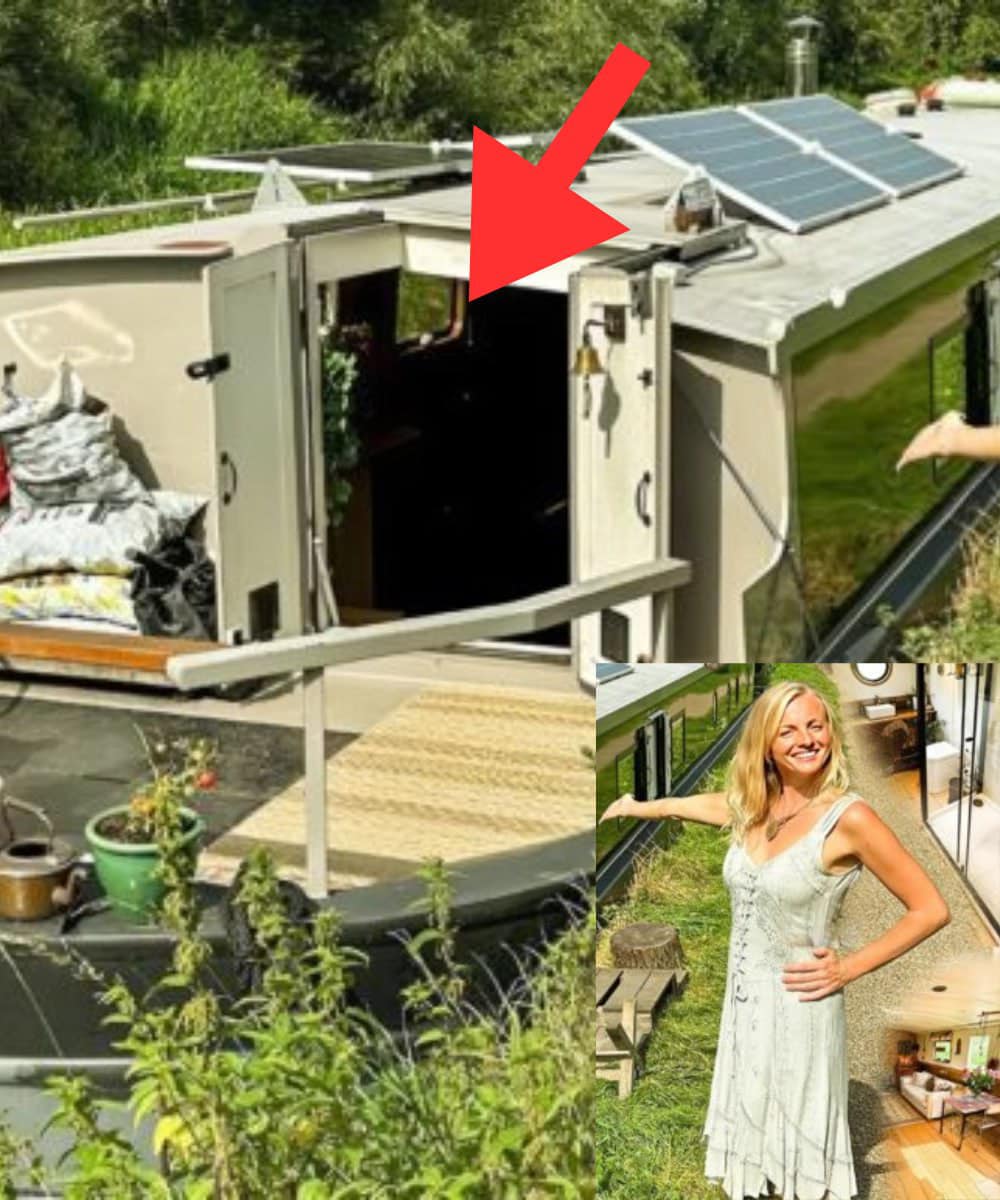For many, the dream of homeownership seems out of reach, especially when securing a mortgage proves impossible. But Jen refused to let financial limitations hold her back. Instead of settling for a rental or compromising on space, she took an unconventional route—designing and building a floating house to call home. Today, she and her two children live comfortably aboard their houseboat, proving that creativity and determination can turn a challenge into a unique and fulfilling lifestyle.

Jen had always envisioned a home that would provide her children with their own bedrooms and ample living space. However, finding a boat with three bedrooms was a rare feat. Determined to make it happen, she drafted a design that mapped out every detail, from window placements to room layouts. With a clear vision in mind, she hired boat builders to bring her dream to life.
The steelwork and engine installation took just seven weeks to complete. The boat was then transported from Liverpool and launched into the water with a crane. While the exterior was complete, Jen still had plenty of work ahead to turn the boat into a cozy, livable space for her family. Over the next ten weeks, she carefully designed the interior, making sure every inch was both functional and inviting. In total, the entire process—from conception to completion—took just 17 weeks.
Financially, building a floating home was far more affordable than purchasing a traditional house. The cost of the steel structure and engine amounted to £87,000 ($112,000), while interior furnishings and finishes added an extra £10,000 ($13,000). Compared to the cost of a home with a mortgage, this alternative provided Jen with financial freedom and a home uniquely suited to her lifestyle.
One of the biggest challenges of living on a houseboat is managing basic utilities. Jen fills her water tank, which holds 1,000 liters, using a hose or water bottles while at anchor. This supply is enough to last her family for approximately two weeks. Another requirement of living on the water is mobility—the boat must be moved every two weeks, covering 32 kilometers in one direction over the course of a year. While this means no permanent address, it also allows Jen and her children to experience different locations and scenery year-round.
Inside, Jen has made sure that every space is both stylish and practical. She installed a modern IKEA kitchen with generous counter space, making meal preparation easy and efficient. The open floor plan creates a seamless flow between the kitchen and the living room, which also doubles as a workspace where Jen performs massage and holistic therapy sessions.
Unlike traditional homes, Jen’s houseboat doesn’t have a television. Instead, she encourages her children to read, fostering a love for books and creativity. Their bedrooms are designed for both comfort and functionality, featuring bunk beds with built-in storage to maximize the limited space. Each room is carefully decorated to make it feel like a true home.
The bathroom is a standout feature of the houseboat. Unlike many compact living arrangements, it boasts a spacious double shower with a luxurious rain showerhead. To accommodate their eco-friendly lifestyle, Jen opted for a composting toilet, which is both practical and sustainable.
Jen’s personal space is just as inviting. Her bedroom features a full double bed and a cozy nook where she enjoys morning tea. One of the highlights of her home is the front deck, where she spends time relaxing and watching breathtaking sunsets. This outdoor space provides a much-needed retreat, offering a peaceful escape from the hustle and bustle of everyday life.
One of the most unique aspects of Jen’s houseboat is its rooftop space, which serves as an extension of their living area. She and her children use it as a garden, a place for yoga, and an outdoor dining spot where they enjoy meals while taking in scenic views. The rooftop adds an extra dimension to their home, allowing them to connect with nature while enjoying the comforts of their floating lifestyle.
Jen’s story is a testament to the power of resilience and creativity. When faced with obstacles, she chose to think outside the box, proving that homeownership isn’t limited to traditional structures. While many struggle with mortgage constraints, Jen found an alternative way to build a stable and beautiful home for her family.
For those feeling discouraged by financial limitations, Jen’s journey offers an inspiring lesson: there’s more than one way to create a home. Whether it’s a houseboat, a tiny home, or another unconventional living arrangement, her story demonstrates that with determination and vision, anything is possible. Home is not just about walls and a roof—it’s about creating a space that reflects your needs, lifestyle, and dreams.





